Engineering analyses for the P-Sets, Homeworks, and Term Paper
This page contains the full set of structural studies that are available to students.
In CEE262B, students are only responsible for a subset of these.
In CEE262A, students can use these as a resource for the term paper.
Part A: Introduction to Structural Engineering
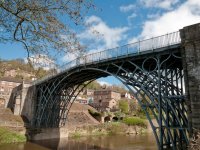
Learning the Vocabulary
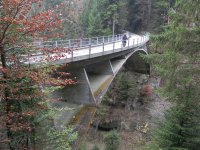
Basics of Structural Analysis
Part B: Bridges
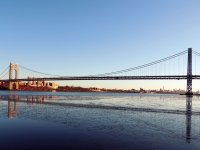
Suspension Bridges I: Towers and Anchors
A suspension bridge is one in which the bridge deck is supported by cables that are suspended from typically two large towers. The main spanning cables are continuous over the tower supports and are firmly anchored at the ends of the bridge.
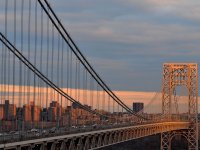
Suspension Bridges II: Cables
In Suspension Bridges I, we learned about the components of a suspension bridge and the forces acting in the towers and anchors. Here we focus on the forces in the cables.
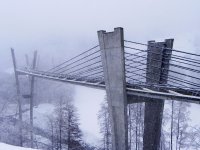
Cable Stayed Bridges
A cable stayed bridge belongs to the family of cable supported bridges, such as suspension bridges, but unlike these, the cables directly connect the deck to the towers (often referred to as “pylons” in cable stayed bridges).
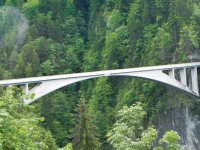
Arched Bridges
In the previous study, we learned that a cable is a flexible structural element that can only resist axial tensile forces. As such, a cable changes its form to ensure that only tension forces are applied. Unlike a cable, an arch is rigid and cannot change its form in accordance with the applied loads.

Tied Arch Bridges
A tied arch bridge is one whereby the deck hangs from the arch, connected by hangers. A special feature of the tied arch bridge is that the horizontal reaction at the abutment is carried by tension in the deck.
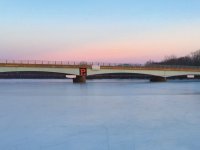
Beam Bridges
A beam is a member that resists applied loads in bending. In contrast to columns and cables in which the loads are applied along the main axis of the member, loads on a beam are perpendicular to the member.
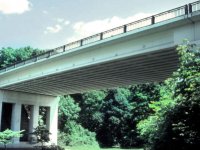
Prestressed Beam Bridges
Concrete beams require steel reinforcing bars embedded in the concrete to resist tension and are thus called reinforced concrete beams. In a simply supported reinforced concrete beam, the steel bars are placed near the lower edge of the beam to carry the tension due to bending forces.
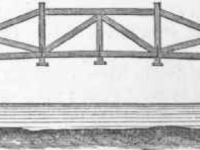
Trussed Bridges
Under Development
Part C: Vaults
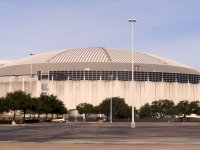
Spherical Domes I: Shape, Loads, and Supports
A dome’s shape, loads and supports determine the forces, as in any structure. Once these forces are found, the corresponding stresses can be found and then compared to the specific material capacity.
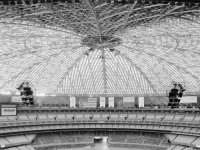
Spherical Domes II: Meridonial and Hoop Forces
Membrane theory will be used to analyze the dome forces and stresses. The theory assumes that no internal forces act out of the plane of the shell, and therefore, there is no bending (moments) in the structure. Two main types of forces act on a dome: meridonial and hoop.
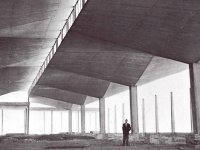
Hyperbolic Paraboloid Umbrellas
Candela has said that “of all the shapes we can give to the shell, the easiest and most practical to build is the hyperbolic paraboloid.” Why? To understand the comment one needs to understand the geometry of the hyperbolic paraboloid, which is commonly referred to as the hypar.
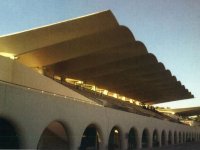
Horizontal Cantilever Roofs
A horizontal cantilever is a horizontal structural element that is supported on one end only (for example, a diving board in a swimming pool illustrates the concept). Two components to the horizontal cantilever structural system are: (1) the cantilever itself, and (2) the backspan, which balances the moment generated by the cantilever.
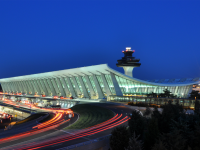
2D Graphic Statics: Hanging Cable Roofs
The shape of a hanging cable roof is very similar to the cables of a suspension bridge. To analyze these hanging cable roofs, the graphic statics method is used in this study. As the name implies, graphic statics is a graphical solution, as opposed to numerical solution, for finding the forces and geometry of structures. The visual nature of graphic statics allows the designer to literally see the relationship between force and form.
Part D: Buildings

Column-Like Structures
Completed in 1884, the Washington Monument is one of the great symbols of the United States’ capital. The structure was designed by architect Robert Mills and takes the form of an obelisk, historically a popular choice for monuments.
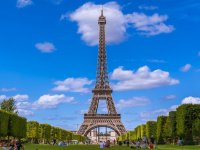
Vertical Cantilevers Part I: Wind-Controlled Structures
Due to its height and lightness, the dominant load on the Eiffel Tower is wind, rather than gravity loads. Therefore, the structure acts as a vertical cantilever rather than as a column.
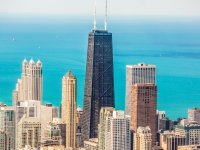
Vertical Cantilevers Part II: Wind and Gravity Controlled Structures
Because of the size of this steel structure, the gravity loads on the Hancock Tower are significant. In addition, the height of the structure and the windy conditions in Chicago are two factors which combine to make the wind load on the building an important factor in design as well.

Wind
To come . . .